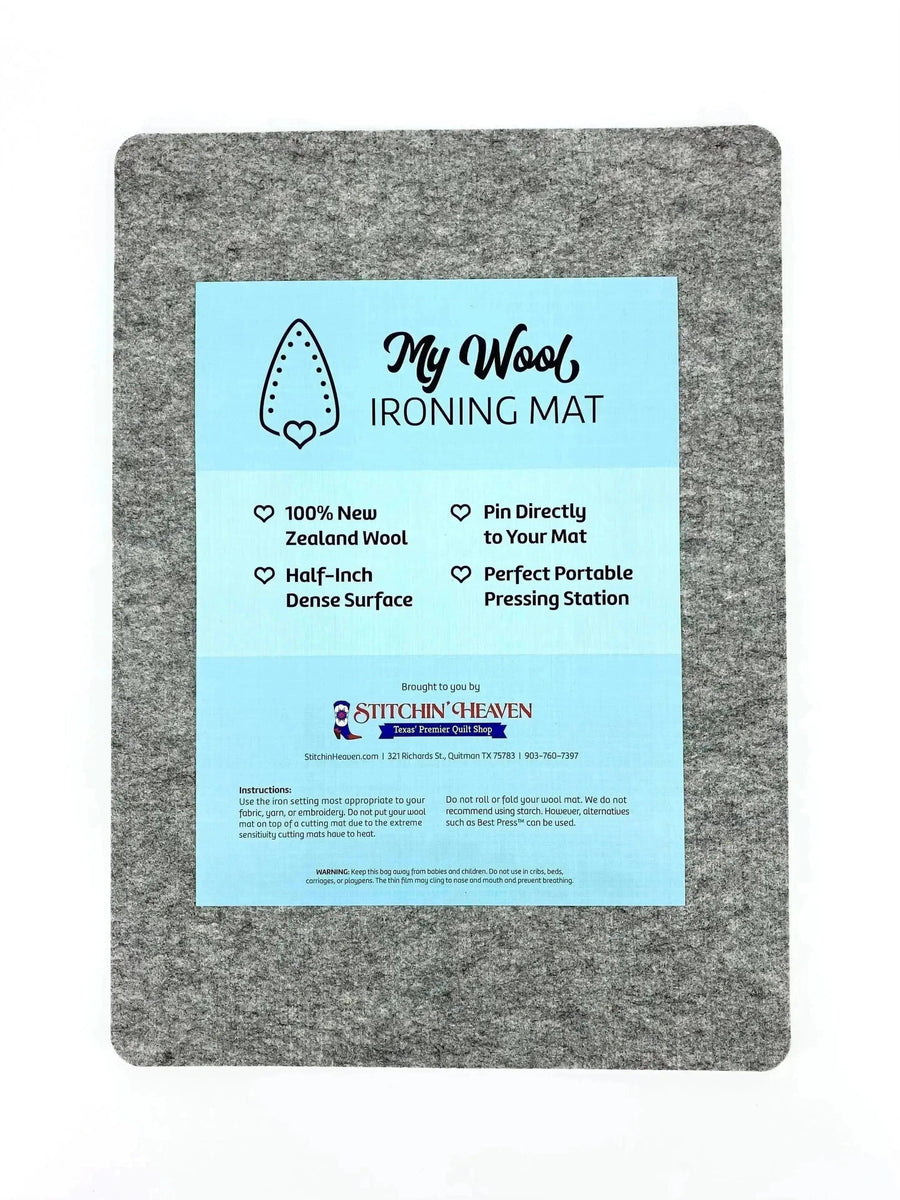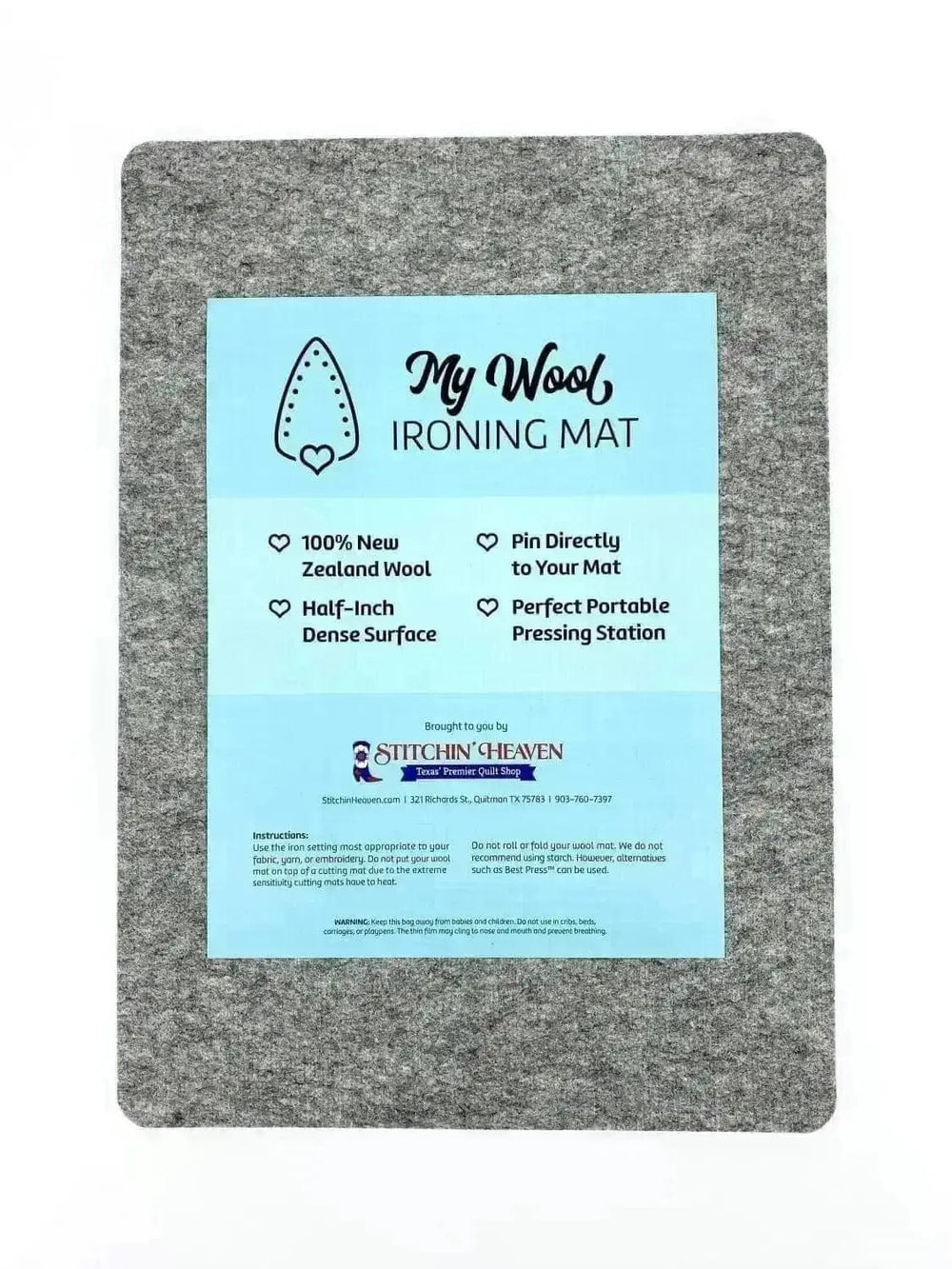How to Care for your Fabric Cutting Mat
Your fabric cutting mat is one of the most important tools to have in your sewing room when you're working on quilts or other creative projects. These mats are fairly costly, so taking care of them must be a priority. Unfortunately, failing to take care of yours means you'll have to either buy a new cutting mat or have to deal with potential issues with your projects due to uneven cuts.
Whether you've just gotten your first cutting mat or have been using cutting mats for a long time, taking the time to learn about how to clean your cutting mat and care for it is beneficial. It can prolong the life of the cutting mat and reduce the expense you incur with your crafting projects.
Once a quilter or crafter finds a cutting mat they like, they'll usually stick to that specific mat. It can be hard to find the perfect cutting mat, so once you do, you'll likely want to stick to it. This can make it hard to part with a cutting mat, even if it's seen better days. This makes it necessary for all crafters to carefully care for their cutting mats.
Caring for Your Cutting Mat: The Basics
Why Is Cutting Mat Care Important?

The cutting mat you use has a big impact on the quality of a project. A good cutting mat makes the preparation work for any project a bit easier. When it's in good shape, the cutting mat ensures you have the proper cuts for each piece. This improves the appearance of the entire project. Cutting mats that are getting worn out will lose their smooth surface, and will produce cuts that aren't as even as those on a good cutting mat.
In order to keep your cutting mat in good shape, you have to take care of it. There are some points you have to consider only for specific cutting mats, so it's imperative you take the time to read the directions that come with the mat. Most of these instructions will have tips you can use to ensure the mat lasts as long as possible.
Cutting mat care is like brushing your teeth: When you take the time to do it properly, the cutting mat will remain in good condition so you can continue to use it. But, if you stop taking care of it, you'll quickly notice that the quality and ease of the cuts you make on it deteriorate.
Taking care of the cutting mat isn't something you can do every now and then. You have to take care of it on a regular basis. This prevents the damage and wear from becoming so great that it can't be overcome. Think of it as protecting your investment.
How to Take Care of a Cutting Mat
You can start taking care of your cutting mat by making sure it's set up properly. Always set it up on a flat surface to ensure you get the correct cuts. You have to consider your workspace size. Some cutting mats are able to be cut to fit any workspace surface. Remember to measure carefully so you don't end up with a cutting mat that's not sized correctly.
Think about the surface under the cutting mat. Self-healing cutting mats are a bit thinner and more flexible. Hard surface cutting mats are thicker and don't give in the same manner. Because of this, you may need to have a more durable surface under the self-healing cutting mat than you would under a hard surface one.
Another consideration for the cutting mat is what type of project you're working on. You'll be able to move the project around the cutting mat if you're cutting smaller pieces. Larger cuts may require you to set up the cutting mat in a way that allows you to make the longer cuts without having to reposition the materials on the cutting table.
Many cutting mats are meant to be mobile and are easily rolled up to move. It's imperative that you think carefully about how you're going to move the cutting mat from one location to another. You should also ensure that you're taking the time to rotate it on the work surface as you can. With each rotation, double-check the placement of the mat to ensure it won't get damaged when you use it
.
Another important thing to remember about your cutting mat is that you must only use sharp tools on it. Dull blades can put pressure on the mat that can damage it. You shouldn't ever have to put too much pressure on the fabrics you're cutting. It's much less expensive to replace the blades on a rotary cutter than to replace the entire cutting mat.
How to Clean a Cutting Mat

Keeping your cutting mat clean is important. After each use, you should gently brush the mat off with a soft brush. You should try to get the fabric fibers, fuzz and lint out of the cuts on the mat. Doing this enables a self-healing cutting mat to remain in good condition. You only need to lightly brush the mat. Trying to scrub it can cause damage.
After you brush the mat off, you need to moisturize the self-healing cutting mat. Not only does this help condition the mat but it also removes minor surface marks. Follow these steps to moisturize, clean and condition your cutting mat:
- Rub any stains with a solution of white vinegar and dish soap, but don't scrub so hard that you damage the surface of the cutting mat.
- Fill a tub or sink with cool water and place 1/4 cup of vinegar in the water.
- Place the mat in the sink or tub and allow it to soak for at least 15 minutes.
- Add a bit of dish soap after the soak and swirl the water around to mix it.
- Gently rub the mat with a soft brush to remove any fibers that prevent the mat from self-healing.
- Rinse the mat thoroughly with clean, cool water until the water comes off the mat clear.
- Allow the cutting mat to air-dry by laying it flat and keeping it away from heat.
- Blot the mat with a cotton towel or lint-free cloth if you see any damp spots remaining.
It's important that you never use hot water on your self-healing cutting mat or hard surface cutting mat. Heat can warp the mat as it dries. Never use any chemicals besides vinegar and dish soap on the cutting mat, as they can damage the surface of the mat.
Cutting Mat Storage Ideas
Storing your cutting mats properly is another way you can extend the life span of the cutting mat. Try not to roll up the mat when you store it. Some people think rolling it up isn't going to damage it, but rolling can damage the integrity of the mat. Another issue with rolling up the cutting mat is that it might become curled in a way that negatively impacts the way you can cut on the mat. Rolling the mat can keep the cuts on the mat open.
Make sure any cutting mat you have is stored out of direct sunlight. Sunlight can damage the finish of the cutting mat. It can also cause the mat to heat up, which can warp the mat, or curl the edges of the mat and cause shrinkage in the surface.
Extreme temperatures, both too hot and too cold, can also damage the mat, possibly causing the mat to crack. Keeping it at a temperature that's comfortable to you can help keep the mat flat and in good condition.
A drawer that fits your cutting mat is a great place to store it. This protects it from direct sunlight and inconsistent temperatures. You can also look into getting special trays made just for your cutting mats. Some of these are suitable for traveling with your cutting mats.
How to Know When to Replace Your Cutting Mat with a New Mat

It's important to remember that a high-quality self-healing cutting mat is going to last only so long, even if you're caring for your self-healing cutting mat properly. When you notice deep gouges or visible marks on the mat, you'll know it's time to replace it. You may notice these marks or gouges are heavily concentrated in one area of the mat. This is a sign you've used your mat in the same position without rotating it, and it means you need to replace the entire cutting mat.
Even if you can't see visible cuts or gouges, you'll know it's time to replace the cutting mat if you have to press harder with your rotary cutter now than when you first got the mat. This is a sign that the structural integrity of the mat is failing.
Another sign that it might be time to replace your cutting mat is if the fabric is getting snagged. It's possible you won't see any visible cuts, but there might be some slivers of the mat getting hung up on the fabrics.
Sometimes the reason to replace a cutting mat is that it's become warped or damaged. Warping and similar damage can make cuts uneven. Crafters and quilters don't want uneven cuts, so replacing cutting mats that have these issues is a priority. Replacing your cutting mat often can be avoided by caring for it properly. You should also know how to repair a cutting mat so you can take the best care possible of your mat.
Bonus Tips for Caring for Your Cutting Mat
The quilting and sewing tools you use on your cutting mat play an important role in how long it will last. Take the time to ensure that the blades on your cutters are sharp and new. When they are, you won't have to use as much pressure to cut the material. This helps to preserve the integrity of the cutting mat so you can have as much use possible out of it.
Remember to turn your cutting mat periodically. This is especially important for self-healing cutting mats. By rotating them, you'll use the whole mat instead of making the majority of the cuts in only one area of the mat.
Caring for your mat means keeping it away from heat. Even leaving your mat in your vehicle on a hot summer day could lead to a warped cutting mat. If you have to leave it in the heat, try to shield it from direct sunlight and keep it flat.
Ensure you only use the cutting mat that's appropriate for the materials you're working with. Cutting mats are made especially for specific materials. The mat you use to cut paper or card stock won't work well for fabric. Trying to use an incorrect mat can damage the cutting mat and may also give your project an inferior appearance.
Also, some rotary cutting mats have a unique feature: they're self healing! Self healing mats can restore their cutting surfaces without any extra work, and they're usually easier to maintain to boot. Martelli makes some of the highest-end mats available, and they're self-healing.
Stitchin' Heaven Can Help You with Your Quilting and Craft Projects
If you need a new cutting mat or any other quilting supplies, the team at Stitchin' Heaven is ready to help you find them. We know you're ready to get started on your sewing project, and we have the quilting tools and supplies to make it easier. We'll work with you to determine what options we have that will help you complete your projects in the best manner possible.





